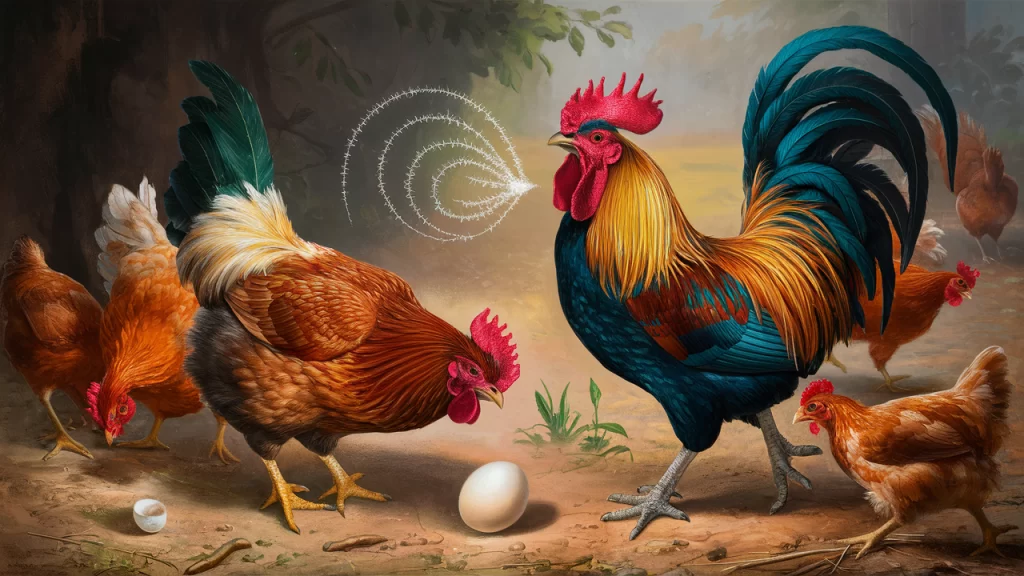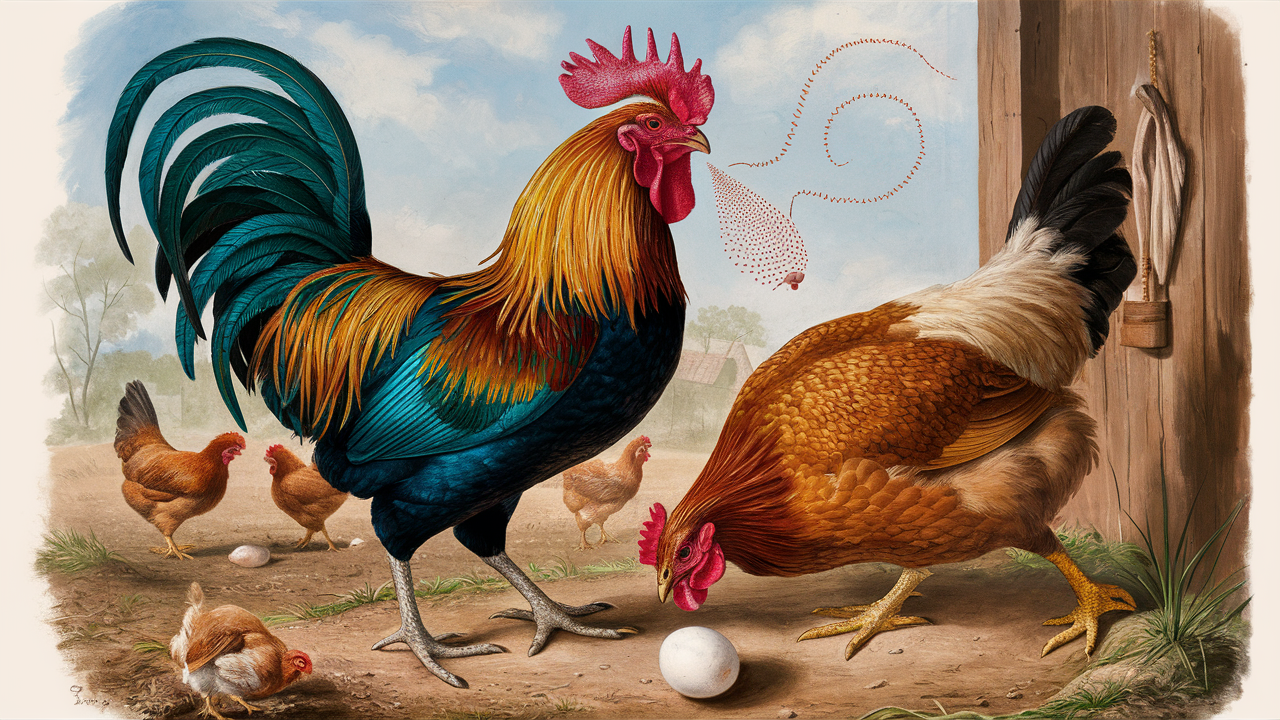Table of Contents
How does a rooster fertilize an egg? This question might seem simple, but the answer is far more complex and fascinating than you might expect. Understanding how a rooster fertilizes an egg not only satisfies our curiosity but also offers valuable insight into the natural world. In this article, we will explore the intricate steps of how a rooster fertilizes an egg, unveiling the mysteries behind this essential process in poultry reproduction.
The Role of a Rooster in Fertilization

To truly understand how does a rooster fertilize an egg, it is essential to first comprehend the rooster’s role in this process. The rooster, as the male bird in a flock, plays a crucial part in reproduction. Unlike mammals, birds have a unique method of fertilization that doesn’t involve external reproductive organs, making the process of how a rooster fertilizes an egg all the more intriguing.
Courting and Mating Behavior
Before we delve into the specifics of how a rooster fertilizes an egg, it’s important to understand the rooster’s courting and mating behavior. A rooster uses several techniques to attract a hen, including vocalizations, strutting, and even a form of dance. These behaviors are not just for show; they help establish a bond between the rooster and the hen, which is vital before mating can occur. Understanding this behavior is crucial to fully grasp how a rooster fertilizes an egg.
The Act of Mating
The actual act of mating is a critical step in how a rooster fertilizes an egg. When the rooster and hen are ready, the rooster mounts the hen, balancing himself on her back. During this brief moment, the rooster’s cloaca makes contact with the hen’s cloaca in what is known as a “cloacal kiss.” It is during this moment that sperm is transferred from the rooster to the hen, starting the remarkable process of how a rooster fertilize an egg.
The Journey of Sperm: How Does a Rooster Fertilize an Egg?
Now that we’ve discussed the mating process, let’s explore how a rooster fertilize an egg from a biological perspective. After the cloacal kiss, the rooster’s sperm begins its journey inside the hen’s reproductive system. This journey is quite remarkable, as the sperm can survive inside the hen for up to two weeks, patiently waiting for an egg to be released. This is a key part of how does a rooster fertilize an egg, as the timing and survival of the sperm are crucial for successful fertilization.
The Hen’s Reproductive System: Key to How Does a Rooster Fertilize an Egg
To fully understand how does a rooster fertilize an egg, it’s important to have some knowledge of the hen’s reproductive system. The hen’s ovary is where eggs develop. When an egg matures, it is released into the oviduct, where it may encounter the rooster’s sperm. This encounter is critical in how does a rooster fertilize an egg, as fertilization happens when the sperm successfully meets the egg in the oviduct.
The Moment of Fertilization
So, how does a rooster fertilize an egg at the precise moment of fertilization? When the mature egg is released into the hen’s oviduct, the sperm can finally meet the egg. Fertilization occurs when one of the sperm penetrates the egg, merging the genetic material from both the rooster and the hen. This is the magical moment in how does a rooster fertilize an egg that initiates the development of a new life.
What Happens After Fertilization?
After understanding how does a rooster fertilize an egg, it’s essential to know what happens next. Once fertilization has taken place, the egg begins its journey through the hen’s oviduct. During this journey, the egg receives layers of albumen (the egg white), membranes, and finally, a shell. This entire process takes about 24 hours. Afterward, the hen lays the egg, which, if properly incubated, will develop into a chick. This is the final step in how a rooster fertilizes an egg, leading to the creation of new life.
The Role of Incubation in the Development of a Fertilized Egg
Incubation is a vital part of how a rooster fertilizes an egg and the development of that egg. Whether the egg is incubated naturally by the hen or in an incubator, it must be kept at a consistent temperature for the embryo to develop properly. The incubation period usually lasts about 21 days. If the conditions are right, the fertilized egg will hatch, bringing a new chick into the world. This step is crucial in the entire process of how a rooster fertilizes an egg, ensuring that the fertilized egg develops into a healthy chick.
Identifying a Fertilized Egg: How Does a Rooster Fertilize an Egg Successfully?
For those raising chickens, it’s important to know how to identify a fertilized egg. One common method is candling, where a bright light is shined through the egg to observe its contents. If veins or a developing embryo are visible, it indicates that the egg has been fertilized. Recognizing these signs is crucial for those interested in understanding how a rooster fertilizes an egg and ensures successful breeding. Click here to read more about Education.
Fertilized vs. Unfertilized Eggs: Understanding the Difference
Not every egg laid by a hen will be fertilized. How does a rooster fertilize an egg to make a difference? A hen can lay eggs without a rooster, but these eggs will not develop into chicks. Only eggs that have been fertilized through the process we’ve discussed have the potential to hatch into chicks. This distinction is important for anyone raising chickens and seeking to understand how a rooster fertilizes an egg.
How does a rooster fertilize an egg is a process filled with natural wonders, from the initial courting behavior to the moment of fertilization and the eventual hatching of a chick. Understanding how does a rooster fertilizes an egg not only deepens our appreciation for the life cycle of chickens but also highlights the intricate mechanisms of reproduction in nature. Whether you are a poultry enthusiast or simply curious about the natural world, knowing how a rooster fertilizes an egg provides valuable insights into one of life’s many fascinating processes.

